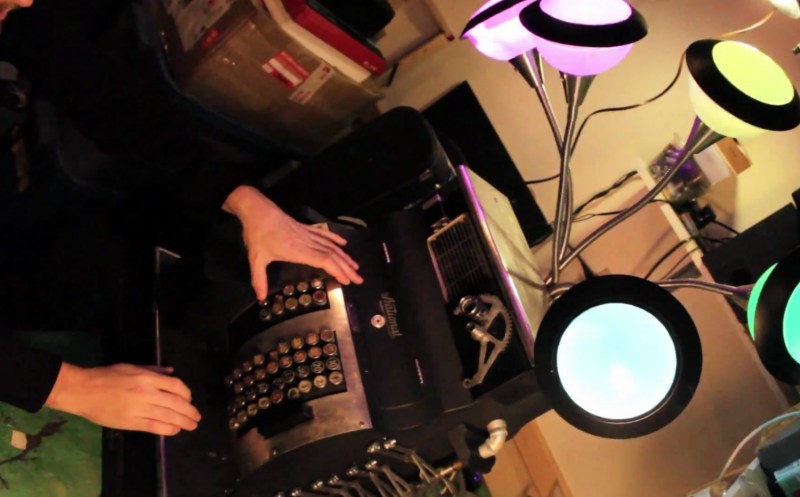73 years ago WWII was in full swing, the world’s first computer had not yet crunched atomic bomb physics and department store cash registers had to add up your purchases mechanically. Back then, each pull caused the device to whirl and kerchunk like a slot machine. [David] & [Scott] kidnapped one of those clunkers and forced it to sing a new tune. Thus the Registroid was born, a self-described “mutant vintage cash register that is a playable, interactive electro-house looping machine.” Why did no one else think of this yet?
Inside, the adding gears and tumbling counters were gutted to make room for the electronics, amp and speaker. Keys were converted to Arduino inputs that then feed to MAX/MSP which serves as a basic midi controller. On top, five “antennae” lamps with LEDs serve as a color organ where they pulse with the audio as split up by an MSGEQ7 equalizer chip. Each row of latching keys corresponds to a different instrument: drum beats, baselines, synths, and one-shots.
We have seen similar things done to a Game Boy and typewriter before, but a cash machine is new to us. Perhaps someday someone will flip the trend and type their twitter messages from an antique harpsichord.
The Registroid appears quite popular when on display at local events, including some wonder when a secret code opens the cash drawer.















Three trills of Scarlatti on harpsichord and twitter would max out.
Video did not start at the beginning, so I have no idea what’s going on. Just something beating but no musicianship.
When choosing between internet access providers, be dependable to resolve how much you covet to spend.
Neat idea. There are less interesting things to make sequencers out of. I am a little disappointed though, I was really hoping that they’d managed to repurpose the mechanics to turn it into a form of analog computer for sequencing. Now that would’ve been bad ass.
Agreed. I tried my best to keep the mechanics intact to be able to use them. The inner workings of the register were beautiful, and it was fascinating to figure out how it all happened (for the most part).
Because it was so well designed, there wasn’t any room left inside if I left everything there, so I opted to remove and save the innards, and am hoping to use them on a future project.
That makes sense. I had the same question as Sylph. Keep on tinkering :)